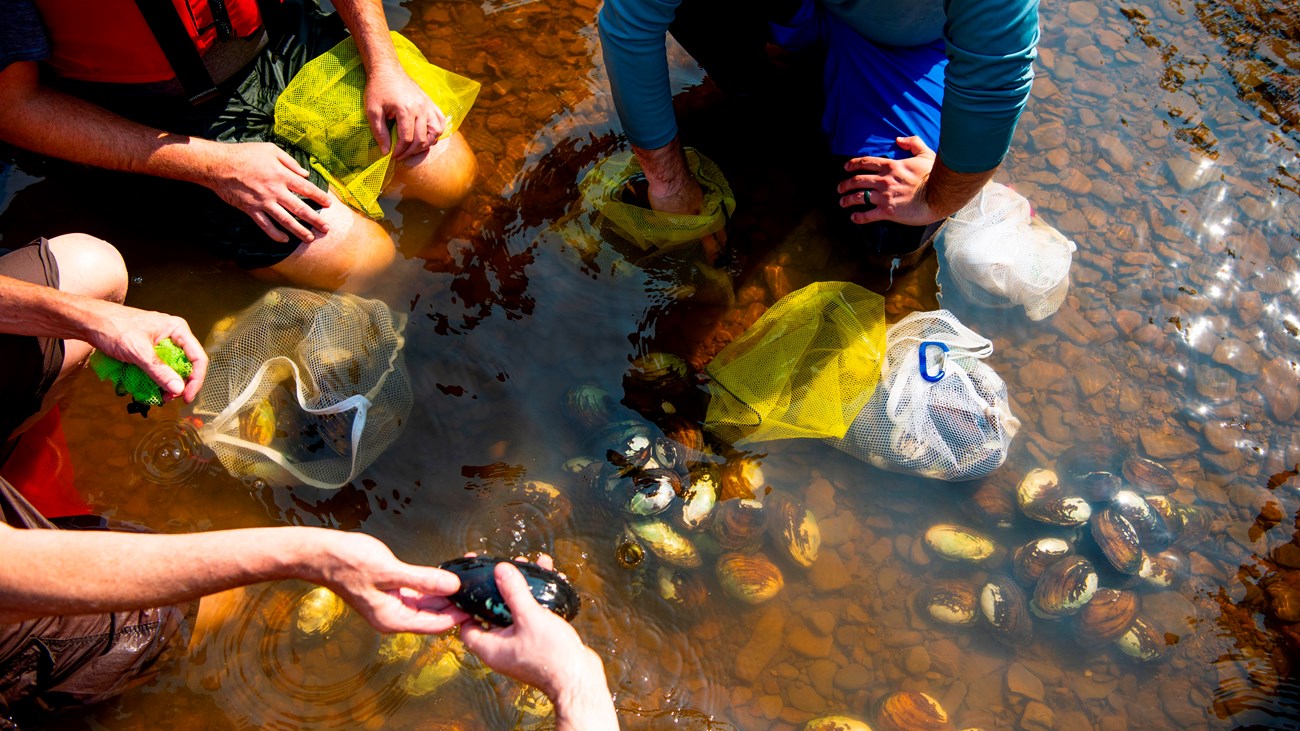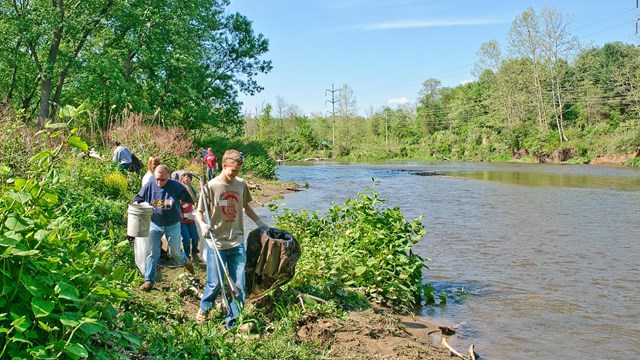|
Many partners along the 100-mile Cuyahoga River are working toward its recovery. About a quarter, or 25 miles, of the river lies within Cuyahoga Valley National Park. Everything that happens upstream impacts the national park. What happens within the national park, impacts everything downstream. The Cuyahoga flows into Lake Erie at Cleveland. As a result, it is part of the world’s largest supply of surface freshwater: the Great Lakes. Water is vital to life. It connects us. 
Can the River Support Rare Wildlife?
Teams of scientists are studying whether the Cuyahoga River is healthy enough to support freshwater mussels and lake sturgeon. 
Current Restoration Projects
Restoration efforts continue throughout the park. Stay up to date on these ongoing river renewal projects. 
Restoring Open Space in the Park
Learn about our work to protect critical resources for the recreational and educational benefit of the visiting public. 
Removing Dams
The Brecksville Diversion Dam and Pinery Feeder Dam were removed in 2020. This marks a huge win for the restoration of the Cuyahoga River. |
Last updated: November 4, 2024
